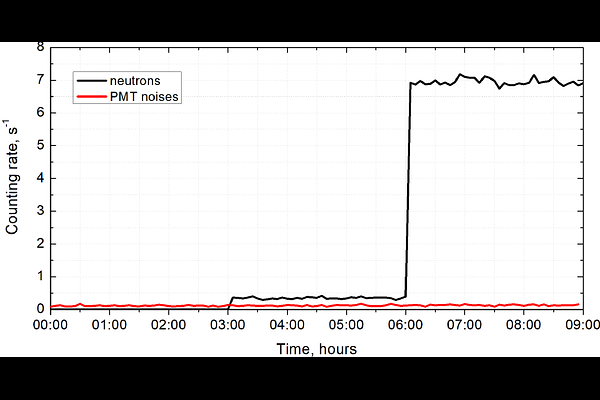The PRISMA-36 array for studying variations of the thermal neutron flux

The PRISMA-36 array for studying variations of the thermal neutron flux
M. B. Amelchakov National Research Nuclear University MEPhI, A. Chiavassa Dipartimento di Fisica dell' Universita degli Studi di Torino, 10125 Torino, Italy Sezione di Torino dell' Istituto Nazionale di Fisica Nucleare - INFN, 10125, Torino, Italy, D. M. Gromushkin National Research Nuclear University MEPhI, S. S. Khokhlov National Research Nuclear University MEPhI, E. P. Khomchuk National Research Nuclear University MEPhI, V. V. Kindin National Research Nuclear University MEPhI, A. Yu. Konovalova National Research Nuclear University MEPhI, P. S. Kuzmenkova National Research Nuclear University MEPhI, E. S. Morgunov National Research Nuclear University MEPhI, N. A. Pasyuk Dipartimento di Fisica dell' Universita degli Studi di Torino, 10125 Torino, Italy, A. A. Petrukhin National Research Nuclear University MEPhI, I. A. Shulzhenko National Research Nuclear University MEPhI, E. P. Volkov National Research Nuclear University MEPhI, I. I. Yashin National Research Nuclear University MEPhI
AbstractFrom 2012 to 2023, the PRISMA-32 array was in operation at the Experimental Complex NEVOD (MEPhI, Moscow). The purpose of the array was to study extensive air showers by detecting the air-shower neutron and electron-photon components using unshielded neutron detectors. To expand the capabilities of this facility, including for the study of cosmic and geophysical phenomena with a neutron flux, its upgrade was carried out. During the upgrade, a dedicated measuring channel for studying variations of the neutron background and the processes affecting these variations was created. To achieve this, the photomultipliers, the integrating amplifiers, the digitalizing electronics and the high-voltage power supply system were replaced. The paper describes the structure of the upgraded array, which was named PRISMA-36, and presents the results of studying the characteristics of the main elements of its "variation" channel. A method for identifying signals caused by neutron capture and the determined criteria for their selection are discussed. An example of a Forbush decrease, caused by a X1.1-class flare and recorded with the variation channel of the PRISMA-36 array, is given.